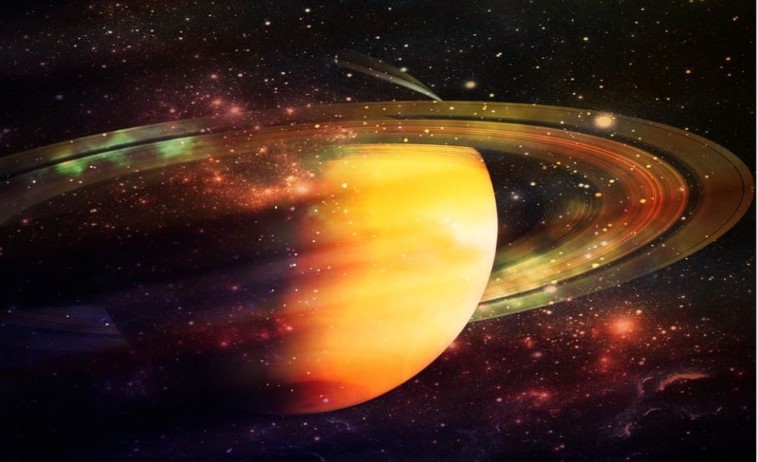Dear Saturn, what is your ring size?

Saturn is certainly an alluring artistic target to look at, photograph or even draw by hand. Theoretically speaking, if you attempted to draw Saturn’s rings from their plane you would certainly need an extra large piece of paper.
At one end of that piece of paper, you would have to draw a line one millimeter thick and then continue doing so for 250 meters at least. And just as a reference – 250 meters is the length of 2.5 football fields!
Drawing Saturn with its rings like that would be hard work. If you were to draw Saturn and the rings in proportion on a smaller paper, then the rings would not even be visible, because they are very thin.
This is, of course, only a rough estimate because the ring size information also varies. Thus, you can find the data that the diameter of the rings is 250,000 kilometers, but also that this diameter is larger and amounts to 282,000 kilometers – and that is on average because it also changes over time.
And what is the height of the rings?
Well, there are variations in the measurements, so in some places it is stated that they are hundreds of meters high, but also that this size is larger and that it amounts to a whole 1.5 kilometers.
Let’s take an average value of one kilometer. Considering the diameter of the ring, its height is really very small. This is precisely why some confusing and inexplicable things happened to early telescope observers: the disappearance of the ring.

The rings were first seen by Galileo Galilei in 1610, although at the time he did not realize that they were rings. It seemed to him that he saw a planet with two appendages, so he wrote down that he saw the planet as tripled.
Galileo had a telescope of modest capabilities, so he couldn’t even see Saturn clearly, and that’s why he was very surprised when he noticed in 1612 that Saturn was left without its two appendages.
It wasn’t until 1655 when Huygens discovered that Saturn is surrounded by rings and that they change their inclination towards the Earth, which is the reason why they are sometimes not visible from our planet.
And they are not visible because they are too thin. The period between two full tilts of the rings as seen from Earth is 29.5 years, but it should be emphasized that this period varies because the ring is exposed to the numerous gravitational influences of Saturn’s satellites, irregularities in the mass of the rings, etc.

The rings consist almost exclusively of lumps of ice (99.9%) the size of a sugar cube up to and including the size of a car. Although there are countless of these parts, a body barely 100 kilometers in diameter could be created from them.
How and when Saturn’s rings were formed and how they are still maintained is a puzzle for scientists and the subject of many discussions and theories. Maybe one of Saturn’s satellites has broken up, and its remains are orbiting forming rings? Who knows.
Although they may have existed since the creation of the planet, it is certain that the entire system of rings is not a stable formation and that their quantity is constantly renewed – probably by mechanical and gravitational crowning of larger satellites.
Still, because of them, many consider Saturn to be the most beautiful planet in the solar system. Anyone who has observed them through a telescope, let alone seen photos from the Voyager or Cassini probes, agrees with this statement: Saturn’s rings are the treasure of our system.
Let’s end on a comedic note, with a quote by the famous American satirist Mark Russell who once jokingly said:
The scientific theory I like best is that the rings of Saturn are composed entirely of lost airline luggage!

